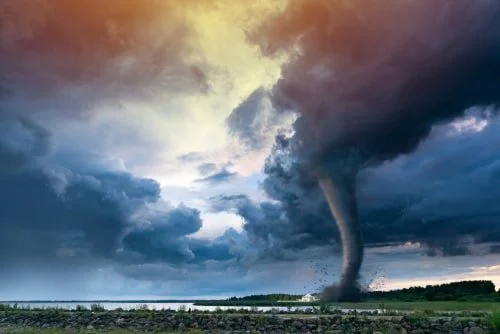Storm Alert! Guide to Make Strong Shelters Approved by FEMA
There are whispers in the wind and darkening clouds on the horizon; it's the stirrings of a storm. Weather can often be unpredictable and terrifying, particularly when it evolves into violent scenarios like hurricanes, tornadoes or blizzards. At such times, we need a safe space that can withstand the wrath of nature's extremities. A structure that is built with our safety in mind that can shield us from the vagaries of unpredictable weather. It is where storm shelters come into the picture, providing a fortress against nature's fury.
The Essence of a Storm Shelter
A tornado shelter is a dedicated refuge to safeguard inhabitants from extreme weather conditions. It is a stronghold, reinforced with durable materials and constructed with specific design elements to resist high winds, flying debris and other potential hazards. In short, it's a protective shell, a cocoon shielding you and your loved ones from the worst Mother Nature can throw at you.
Storm Shelters: The Criteria for FEMA Approval
Strong storm shelters must uphold rigorous standards set by the Federal Emergency Management Agency (FEMA) to ensure the utmost safety. These criteria serve as a yardstick, defining the core characteristics required for a shelter to be FEMA-approved.
Strength Beneath the Surface: Structural Integrity
For a tornado shelter to pass the test, it must exhibit exceptional structural integrity. The walls, roof and door should be designed and constructed to guarantee robust resistance against extreme wind pressure and impact from windborne debris in Oklahoma.
Resistance to the Skyward Pull: Protection Against Uplift
A shelter must counteract uplift forces. Uplift can occur during high-wind events and, if not adequately addressed, can cause the shelter to detach from its foundation.
Guard Against the Unexpected: Debris Protection
Debris is a silent, deadly weapon during storms, making its protection crucial. FEMA-approved shelters must offer effective debris protection, keeping inhabitants safe from potential projectiles.
Breathe Easy: Ventilation
Shelters must ensure adequate ventilation. It is critical to allow fresh air flow and maintain breathable air quality within the shelter during occupancy.
Quick and Easy: Access
During an emergency, every second counts. Thus, reliable storm shelters should ensure easy and quick access, with door designs that can be opened under heavy wind loads or when blocked by fallen debris.
Keeping the Lights On: Electrical Systems
Electrical systems within a tornado shelter must have a design with safety in mind. They should be resistant to water and spark-proof to prevent potential fire hazards.
Building a Fortress: Tips for Constructing FEMA-approved Storm Shelters
Creating a shelter is not just about building a structure; it's about preparing a sanctuary that ensures safety and peace of mind. Here are some tips for building a FEMA-approved shelter:
Protection Against Flying Debris: Use reinforced concrete or steel to provide a tough, impenetrable barrier against potential flying debris.
High Wind Protection: Ensure the design and construction of the shelter are geared toward withstanding high wind pressures, particularly those associated with tornadoes or hurricanes.
Fire Protection: Incorporate fire-resistant materials in the construction of the shelter. It could potentially save lives in the event of a fire-related emergency.
Choosing the Right Spot: The location of the storm shelter is crucial. It should be easily accessible yet safe from potential flooding or falling structures.
Fortifying with Impact-Resistant Windows and Doors: Impact-resistant doors and windows can provide an extra layer of protection. They help keep the interior safe from external threats during a storm.
Maintaining Proper Ventilation and Electrical Systems: Ensure that the shelter has enough ventilation openings and safe electrical systems. Remember, air and light are fundamental requirements during a disaster scenario.
A Stitch in Time: Additional Consideration
Finally, while building a shelter, consider the number of occupants it will house, the availability of emergency kits and the presence of comfortable seating. After all, a tornado shelter should be more than just a safe house—a home away from home during the most challenging hours.
Ride Out the Storm in Comfort and Security
Ready to give your family the ultimate protection against Mother Nature's most ferocious tantrums? Our EF5 Tornado Shelters provide a robust and reliable refuge during the fiercest weather conditions. These OKC storm shelters offer superior quality, unflinching safety and essential amenities to turn your safety hub into a home during those critical hours. Safeguard your peace of mind and secure your loved ones today - EF5 Tornado Shelters, where safety meets serenity!

